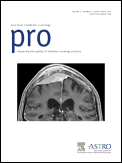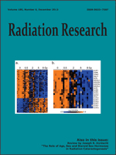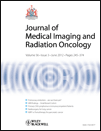
Journal of Radiotherapy in Practice
Scope & Guideline
Empowering Practitioners with Essential Radiotherapy Knowledge
Introduction
Aims and Scopes
- Innovative Techniques in Radiotherapy:
The journal emphasizes research on new and advanced techniques in radiotherapy, such as intensity-modulated radiotherapy (IMRT), volumetric-modulated arc therapy (VMAT), and stereotactic radiosurgery (SRS) to optimize treatment planning and delivery. - Clinical Outcomes and Patient Safety:
Research related to clinical outcomes of different radiotherapy techniques, safety protocols, and patient management strategies is a core focus, aimed at improving patient care and minimizing treatment-related complications. - Radiation Biology and Dosimetry:
The journal publishes studies on the biological effects of radiation, dosimetric evaluations, and advanced modeling techniques to enhance the precision of dose delivery in various treatment settings. - Patient-Centric Research:
Emphasizing the importance of patient perspectives, the journal includes studies on patient experiences, quality of life assessments, and psychosocial impacts of radiotherapy. - Technology in Radiotherapy:
The integration of new technologies, such as imaging advancements in treatment planning and delivery, and the use of artificial intelligence and machine learning in radiotherapy practices are key areas of exploration. - Brachytherapy Innovations:
Research on brachytherapy techniques and outcomes, including the development of new delivery systems and treatment protocols, is also a significant part of the journal's scope.
Trending and Emerging
- Adaptive Radiotherapy:
Adaptive radiotherapy is gaining attention, focusing on personalizing treatment plans based on real-time patient data and tumor response, enhancing treatment precision and effectiveness. - Integration of Imaging Techniques:
The use of advanced imaging modalities, such as MRI and PET-CT, for improved treatment planning and target delineation is increasingly featured, emphasizing their role in enhancing treatment outcomes. - Radiotherapy in Palliative Care:
There is a growing body of research dedicated to the role of radiotherapy in palliative care settings, focusing on symptom management and quality of life for advanced cancer patients. - Patient-Reported Outcomes and Quality of Life:
Research that incorporates patient-reported outcomes and quality of life assessments is on the rise, reflecting a broader trend towards patient-centered approaches in oncology. - Artificial Intelligence in Radiotherapy:
The application of artificial intelligence and machine learning in treatment planning, dose optimization, and quality assurance is becoming a significant theme, showcasing the integration of technology in clinical practice. - Multidisciplinary Approaches to Cancer Treatment:
Emerging research emphasizes the importance of multidisciplinary teams in managing cancer treatment, combining radiotherapy with surgery and systemic therapies for improved patient outcomes.
Declining or Waning
- Traditional Radiotherapy Techniques:
There has been a noticeable decrease in publications focused on conventional radiotherapy methods as newer, more advanced techniques such as IMRT and VMAT gain prominence. - General Radiation Therapy Audits:
While quality assurance and safety audits remain important, the specific focus on general audits without a clear application to innovative practices or patient outcomes appears to be declining. - Basic Radiation Biology Studies:
Research that does not translate into clinical applications or advanced dosimetry techniques seems to be less emphasized, as the journal shifts towards studies with direct clinical relevance. - Non-Clinical Radiotherapy Research:
Topics that primarily address non-clinical aspects of radiotherapy, such as theoretical studies without practical applications in patient care, are observed to be less frequent. - Historical Perspectives on Radiotherapy:
Papers that focus on the historical development of radiotherapy techniques or retrospective analyses without new insights or advancements have seen a decrease in publication.
Similar Journals

Medical Dosimetry
Cultivating Excellence in Radiation Treatment PlanningMedical Dosimetry is a distinguished journal published by Elsevier Science Inc, dedicated to the advancing field of medical dosimetry and its applications within oncology, radiology, and nuclear medicine. With its ISSN 0958-3947 and E-ISSN 1873-4022, this journal serves as a crucial resource for researchers and professionals aiming to enhance their understanding of radiation treatment planning and dosage calculations. Encompassing a comprehensive range of topics from clinical dosimetry to technology assessment, Medical Dosimetry has been disseminating significant findings since its establishment in 1988, contributing to the continuous development of best practices in patient care and safety. The journal currently holds a Q3 ranking in various categories, reflecting its pivotal role in the research community, while not currently offering open access, it remains an essential reference for scholars advancing the techniques utilized in medical imaging and treatment. By fostering a platform for high-quality research, it aims to bridge the gap between theoretical studies and clinical applications, making it a vital addition to any medical library.

Practical Radiation Oncology
Unlocking Potential in Radiation MedicinePractical Radiation Oncology is a premier journal published by Elsevier Science Inc., focusing on the critically important fields of Oncology and Radiology, Nuclear Medicine, and Imaging. With an ISSN of 1879-8500, this journal serves as an essential resource for professionals and researchers dedicated to advancing the practice and research of radiation oncology. Established in 2011 and continuing through 2024, it has quickly gained recognition, achieving a prestigious Q2 ranking in Oncology and an exceptional Q1 ranking in Radiology, Nuclear Medicine, and Imaging as of 2023. The journal, housed in New York, USA, provides a platform for innovative research and practical insights, aimed at enhancing therapeutic practices and improving patient outcomes. As part of its commitment to fostering scientific dialogue, it also features a range of articles, reviews, and clinical studies that cater to the diverse interests of its readers. Hard-copy availability combined with digital access ensures a broad reach for the latest advancements in the field.

STRAHLENTHERAPIE UND ONKOLOGIE
Transforming patient outcomes with rigorous research.STRAHLENTHERAPIE UND ONKOLOGIE is an esteemed journal published by Springer Heidelberg, focusing on critical advancements and research in the fields of Oncology and Radiology. Established in 1986, this journal has carved its niche within the scientific community, ranking in the Q1 category for Radiology, Nuclear Medicine and Imaging, and Q2 for Oncology as of 2023. With an ISSN of 0179-7158 and E-ISSN 1439-099X, it serves as an essential resource for researchers, professionals, and students dedicated to the complexities of cancer treatment and radiation therapy. While the journal operates under a subscription model, its broad international readership values its rigorous peer-review process and comprehensive coverage of pivotal studies. STRAHLENTHERAPIE UND ONKOLOGIE continues to enhance its impact in the domains of oncology and radiology, as evidenced by its commendable Scopus rankings, including a 76th percentile in Radiology and a 65th percentile in Oncology. Its commitment to disseminating innovative research solidifies its role as a cornerstone in the ongoing quest to improve patient care and therapeutic techniques.

Radiation Oncology Journal
Elevating the standards of radiotherapy in oncology.Radiation Oncology Journal, published by the Korean Society of Therapeutic Radiology & Oncology, stands at the forefront of cancer treatment research and innovation within the dynamic fields of oncology and radiology. With a focus on disseminating groundbreaking findings and advancements from 2012 to 2024, this journal aims to foster collaboration among researchers, clinicians, and educators dedicated to improving therapeutic techniques and patient outcomes in the context of radiation therapy. Recognized with a prestigious Q2 ranking in both the Oncology and Radiology, Nuclear Medicine and Imaging categories, it ranks 140th out of 333 in its Scopus category for Medicine Radiology and boasts a 58th percentile placement. While operating on a non-open access basis, the journal remains committed to providing valuable insights and updates to professionals in the field from its base in South Korea. As the landscape of cancer treatment evolves, the Radiation Oncology Journal continues to play a vital role in shaping research trends and enhancing the understanding of radiotherapy's role in comprehensive cancer care.

Physics & Imaging in Radiation Oncology
Advancing the Future of Radiation Oncology Through Imaging InnovationPhysics & Imaging in Radiation Oncology is a premier journal dedicated to advancing the interdisciplinary field of radiation oncology through innovative research and imaging technologies. Published by Elsevier, this open-access journal has made its mark since its inception in 2017, ensuring that groundbreaking findings are accessible to a broad audience. With a strong focus on the integration of physics, imaging techniques, and oncology, the journal occupies esteemed positions in the academic landscape, ranking in the top quartile for Radiation and Radiology, Nuclear Medicine and Imaging as of 2023. The journal serves as a platform for researchers, professionals, and students to share insights and foster collaboration, ultimately improving patient outcomes through enhanced imaging and treatment modalities. Based in Ireland and operating from Radarweg 29, 1043 NX Amsterdam, Netherlands, the journal aims to bridge the gap between theoretical physics and practical applications in clinical settings.

MEDICAL PHYSICS
Unveiling Breakthroughs in Medical Physics Since 1974MEDICAL PHYSICS, published by WILEY, stands as a leading journal in the fields of biophysics, medicine, and radiology, boasting an impressive impact factor and classified within the prestigious Q1 category across multiple relevant domains. With its ISSN 0094-2405 and E-ISSN 2473-4209, the journal has been a vital resource since its inception in 1974, leading the discourse well into 2024. Hailing from the United States, MEDICAL PHYSICS serves a diverse academic audience, comprising researchers, clinicians, and students eager to engage with the latest advancements and methodologies. The journal’s authoritative presence is underscored by its Scopus rankings, placing it among the top percentile in both Medicine and Biophysics, marking it as an essential scholarly platform for innovative research and critical reviews. While not currently an Open Access journal, its commitment to curating high-quality articles ensures that readers can access groundbreaking insights into medical imaging, treatment protocols, and the theoretical underpinnings of medical physics. Explore the intersection of technology and healthcare through the esteemed pages of MEDICAL PHYSICS.

Onkologija
Connecting researchers and practitioners in the battle against cancer.Onkologija is a distinguished open-access journal dedicated to the field of oncology, published by the Institute of Oncology Ljubljana. With its ISSN 1408-1741 and E-ISSN 1581-3215, this journal has become a crucial platform for researchers and healthcare professionals since its transition to open-access in 2008, allowing widespread dissemination of critical findings and innovations in cancer research and treatment. Located in Ljubljana, Slovenia, the journal aims to bridge the gap between clinical practice and research by publishing high-quality original articles, reviews, and case studies that address pivotal issues in oncology. Although specific metrics such as HIndex and Scopus ranks are currently unavailable, Onkologija’s commitment to advancing oncology knowledge is evident in its engaging publications that attract a diverse readership, making it an essential resource for anyone invested in the battle against cancer.

Tumori Journal
Bridging Research and Practice in Oncology.Tumori Journal is a distinguished publication in the field of oncology, dedicated to advancing the understanding and treatment of cancer since its inception in 1946. Published by SAGE Publications Ltd, this Italian journal serves as a pivotal platform for researchers, clinicians, and academicians to disseminate cutting-edge findings in cancer research and related areas of medicine. With an impressive record of contributions spanning multiple decades, Tumori Journal aims to foster collaboration and dialogue among professionals in the oncology community. Although classified in the Q4 category for Cancer Research and the Q3 category for both Medicine (miscellaneous) and Oncology as of 2023, the journal continues to draw interest with its rigorous peer-review process and commitment to quality. Researchers are encouraged to explore innovative methodologies and share impactful clinical insights through the journal, which also ranks within the top tiers of Scopus metrics for oncology and cancer research domains. With a growing emphasis on accessible research, Tumori Journal remains an essential resource in the continuous fight against cancer.

RADIATION RESEARCH
Exploring the complexities of radiation exposure and its effects.RADIATION RESEARCH is a prestigious journal published by the RADIATION RESEARCH SOC that serves as a vital resource for professionals and researchers in the fields of biophysics, radiation science, and radiology. Established in 1954, this journal has consistently advanced the study of radiation's effects on health and the environment, bridging fundamental and applied research. It boasts an impressive impact factor reflected in its quartile rankings, including Q2 in Biophysics and Q1 in Radiation, making it a highly regarded publication within its discipline. Researchers will find valuable insights through rigorous peer-reviewed articles that explore innovative methodologies and findings related to radiation exposure, imaging technologies, and the biological consequences of radiation. Although the journal does not currently offer open access, it remains a vital reference for academia and industry, fostering a deeper understanding of radiation sciences and their implications for future research and public health.

Journal of Medical Imaging and Radiation Oncology
Empowering Research in Radiation Oncology and ImagingJournal of Medical Imaging and Radiation Oncology, published by WILEY, is a pivotal resource in the fields of oncology and medical imaging. With an impact factor reflective of its commitment to advancing research, the journal has maintained a robust reputation since its inception in 2008 and continues to thrive through 2024. It is indexed with an insightful ranking, with a Q2 classification in Radiology, Nuclear Medicine and Imaging, affirming its importance in these disciplines. This journal not only serves as an open access platform, allowing extensive reach and accessibility, but also fosters a scholarly community dedicated to the innovation of imaging techniques and radiation oncology practices. As a key player in disseminating crucial findings and advancements, it appeals to researchers, clinicians, and students who aim to contribute to the evolving landscape of medical imaging and cancer treatment methodologies. The journal is based in Australia, at 111 River St, Hoboken, NJ, and invites submissions that push the boundaries of current knowledge in this critical area of healthcare.